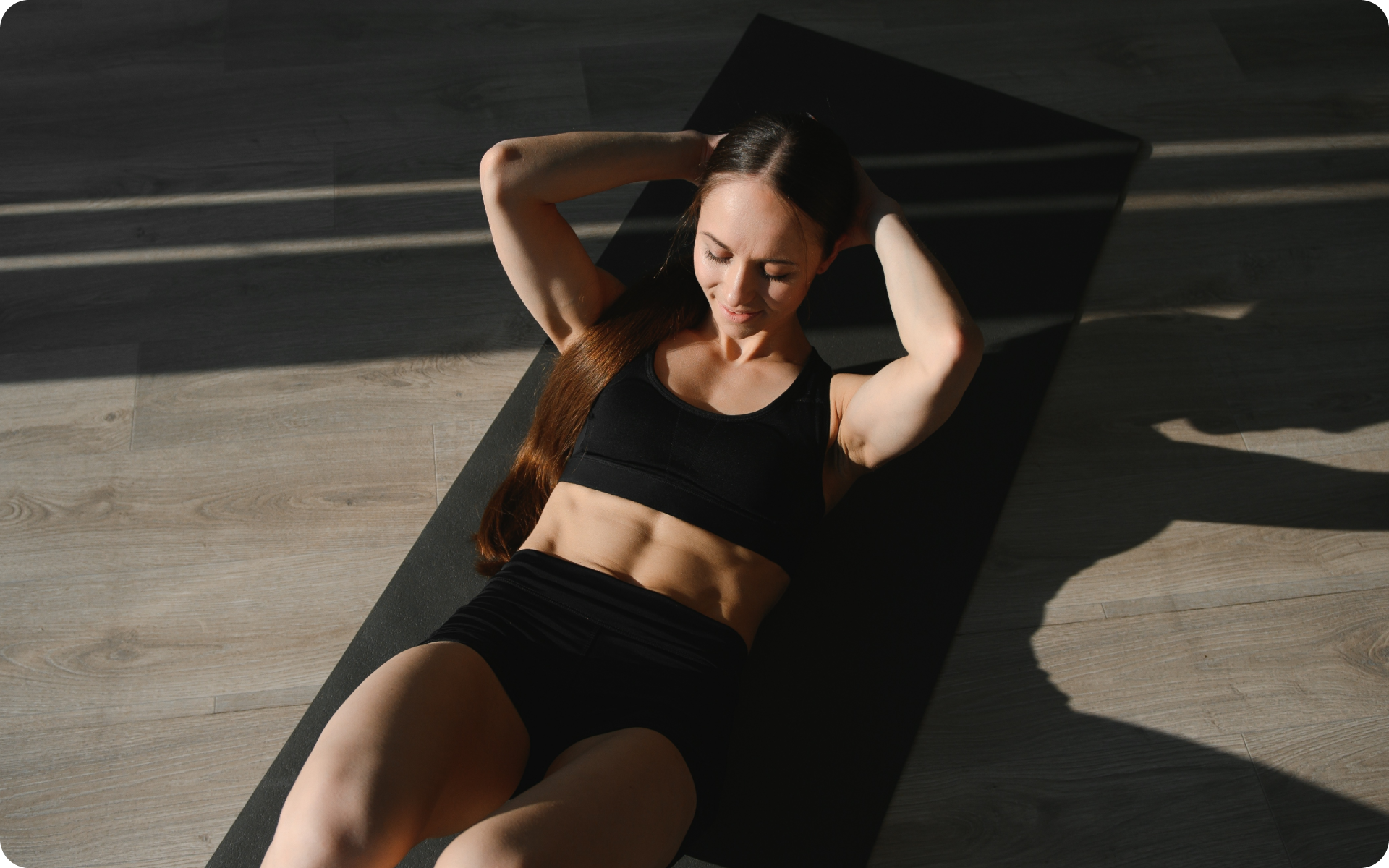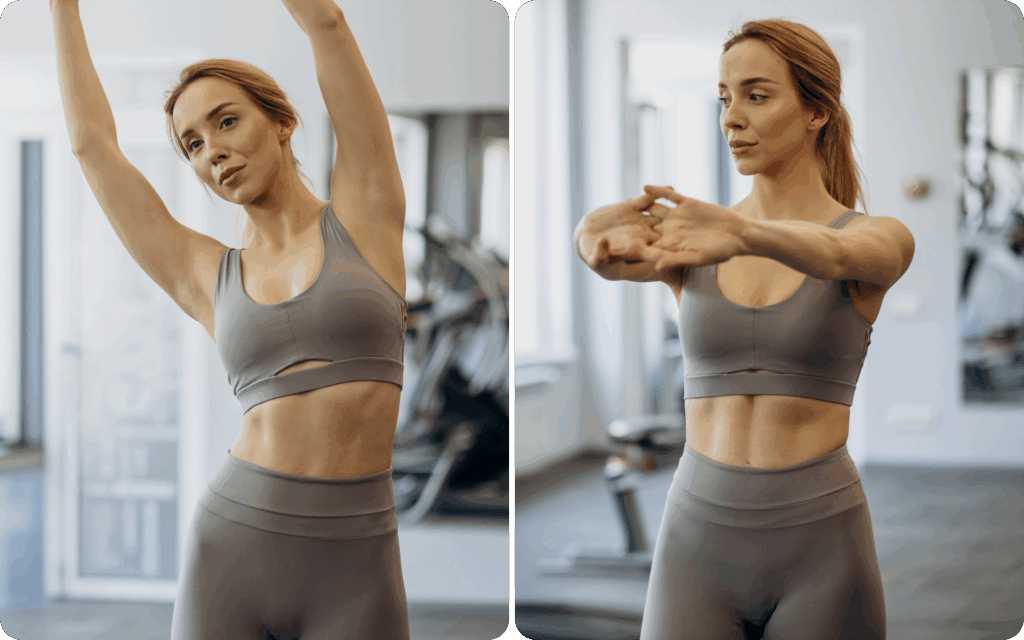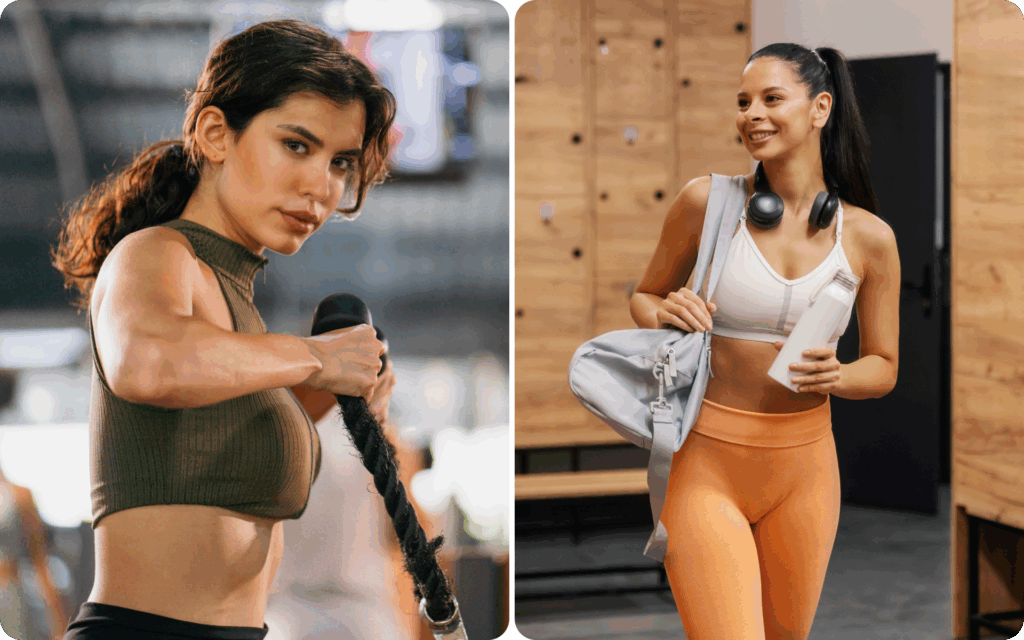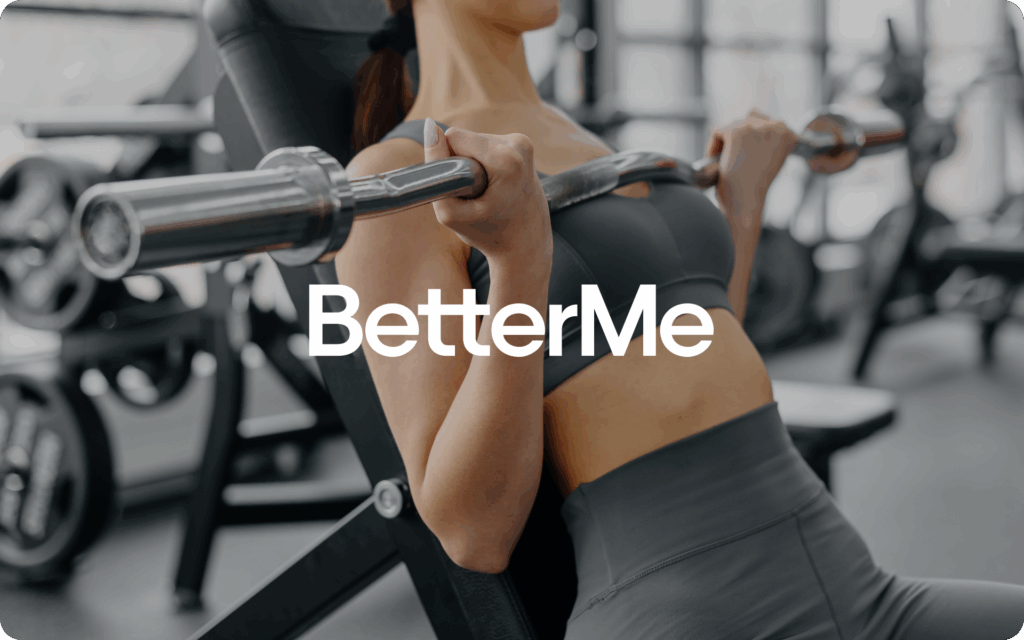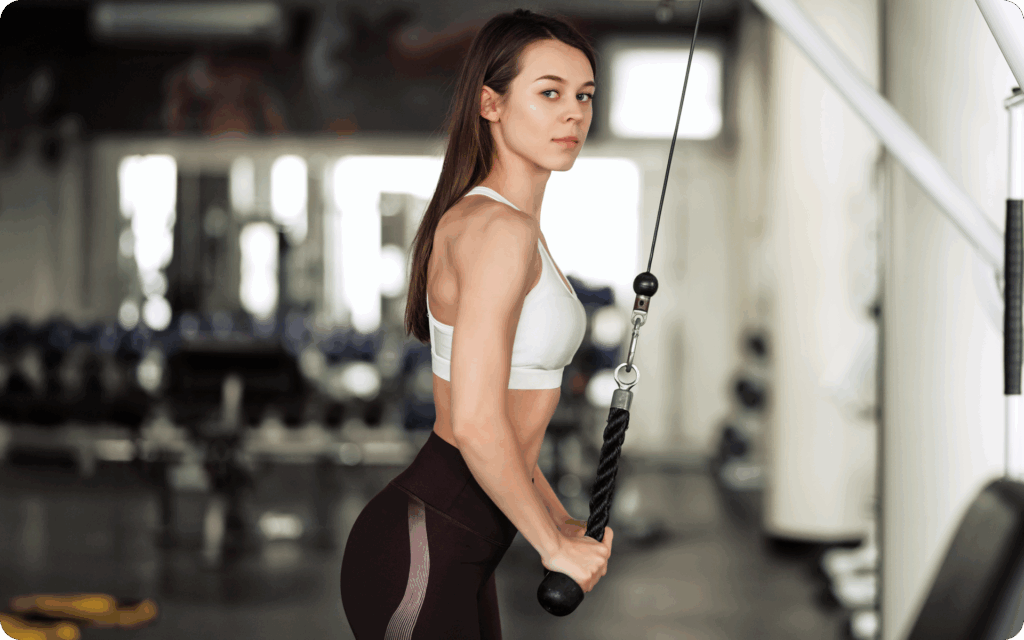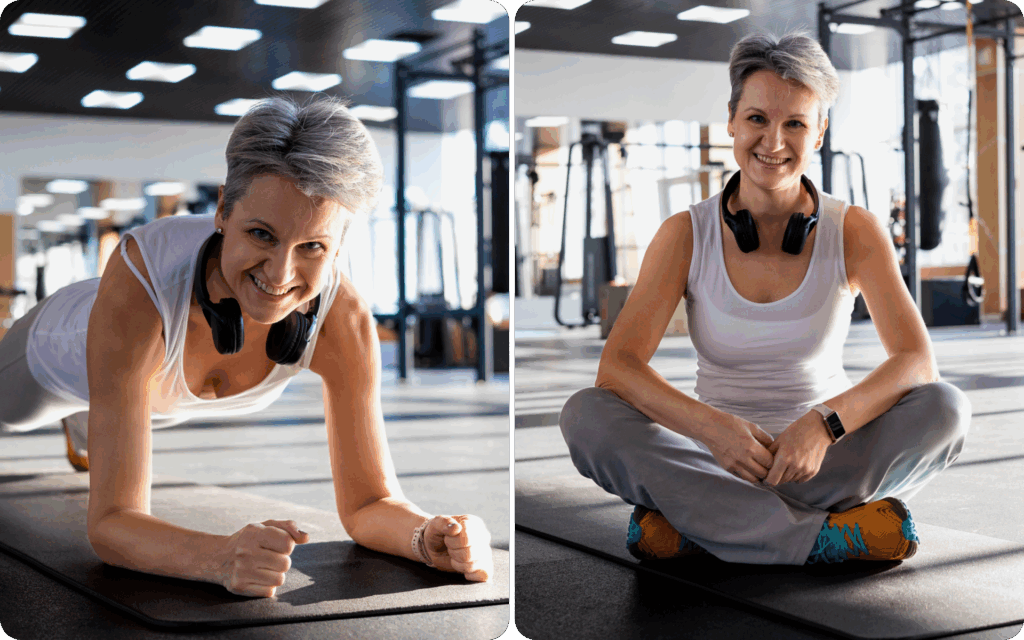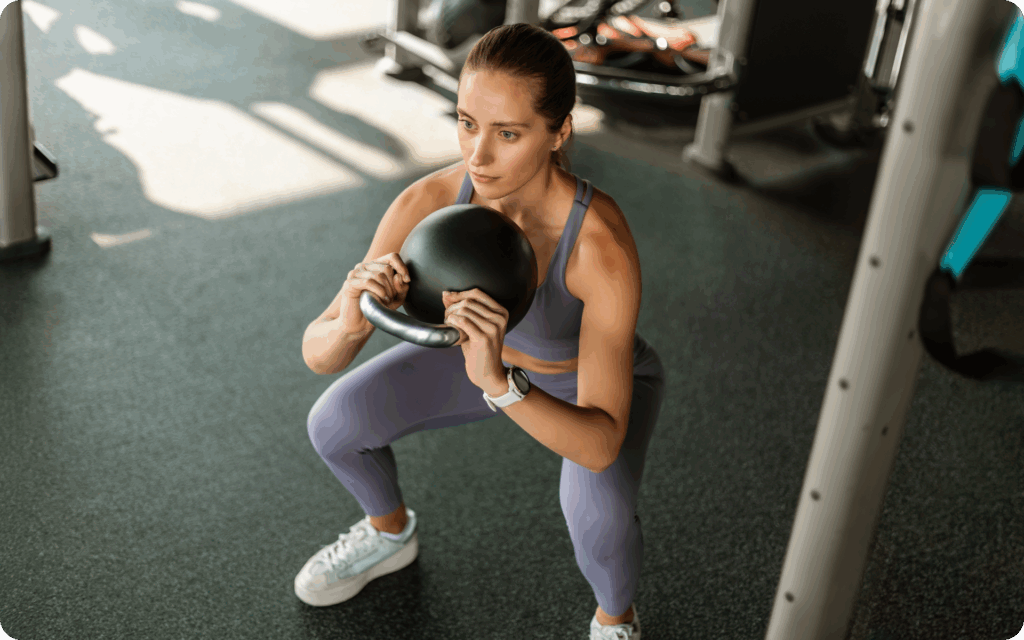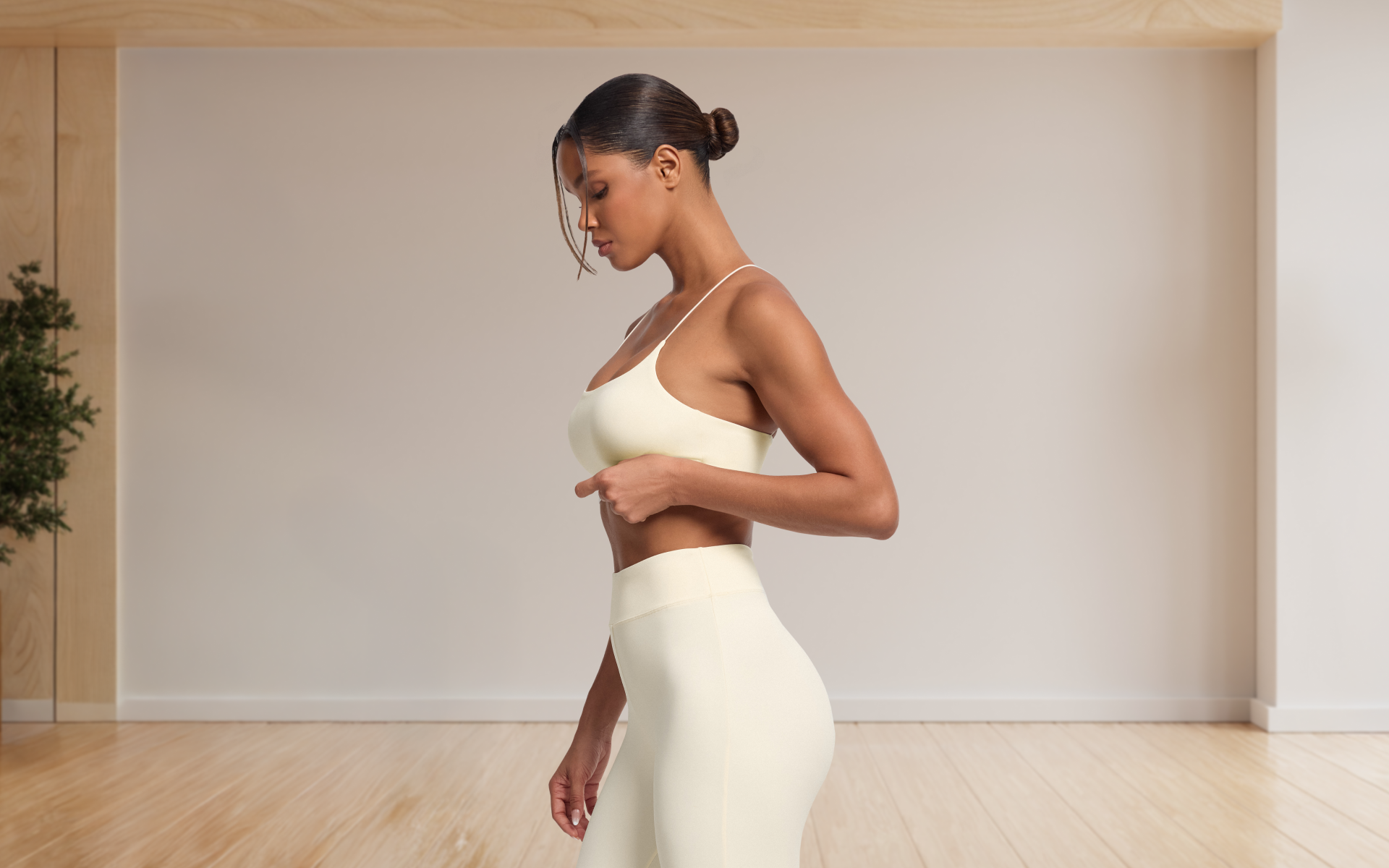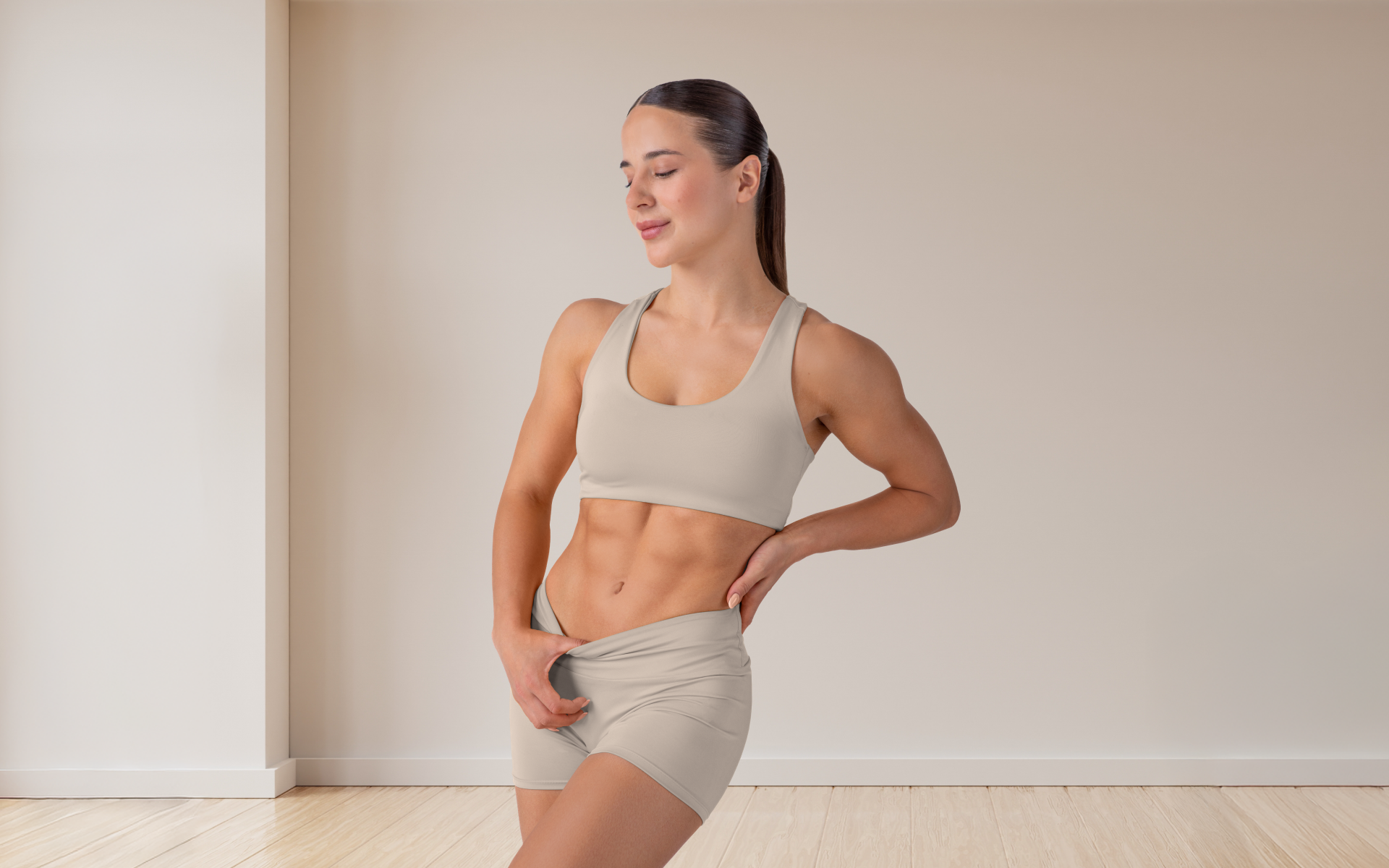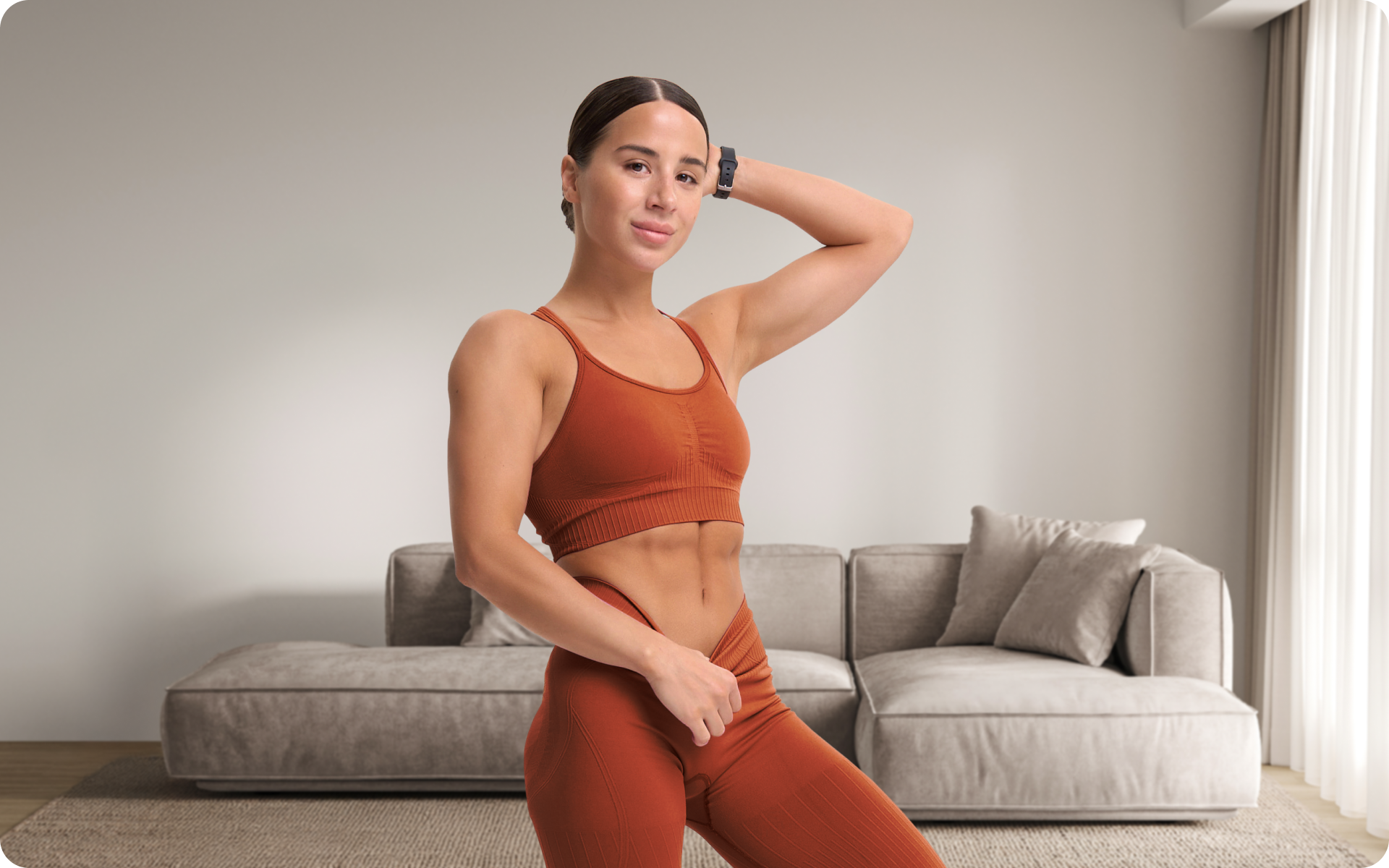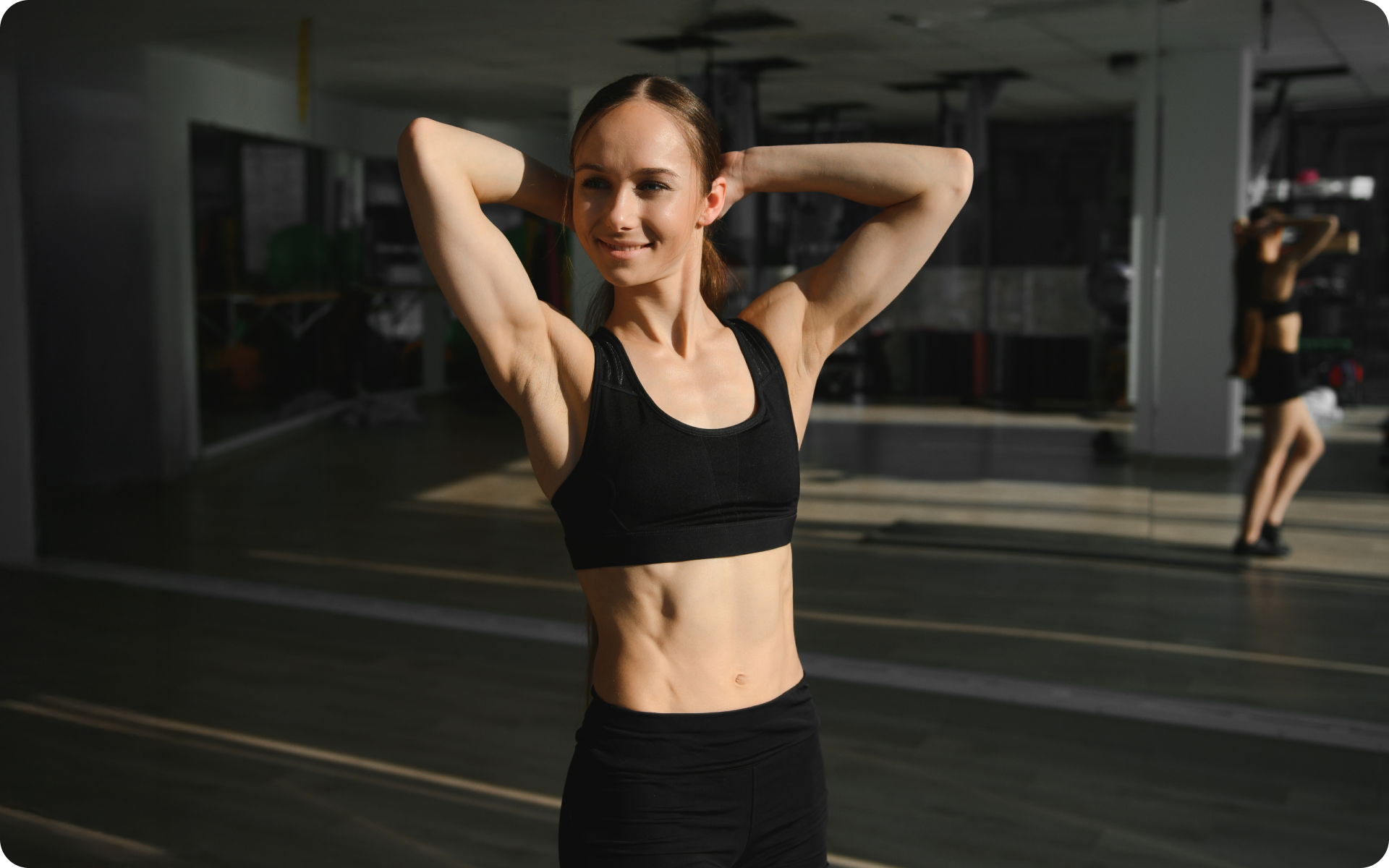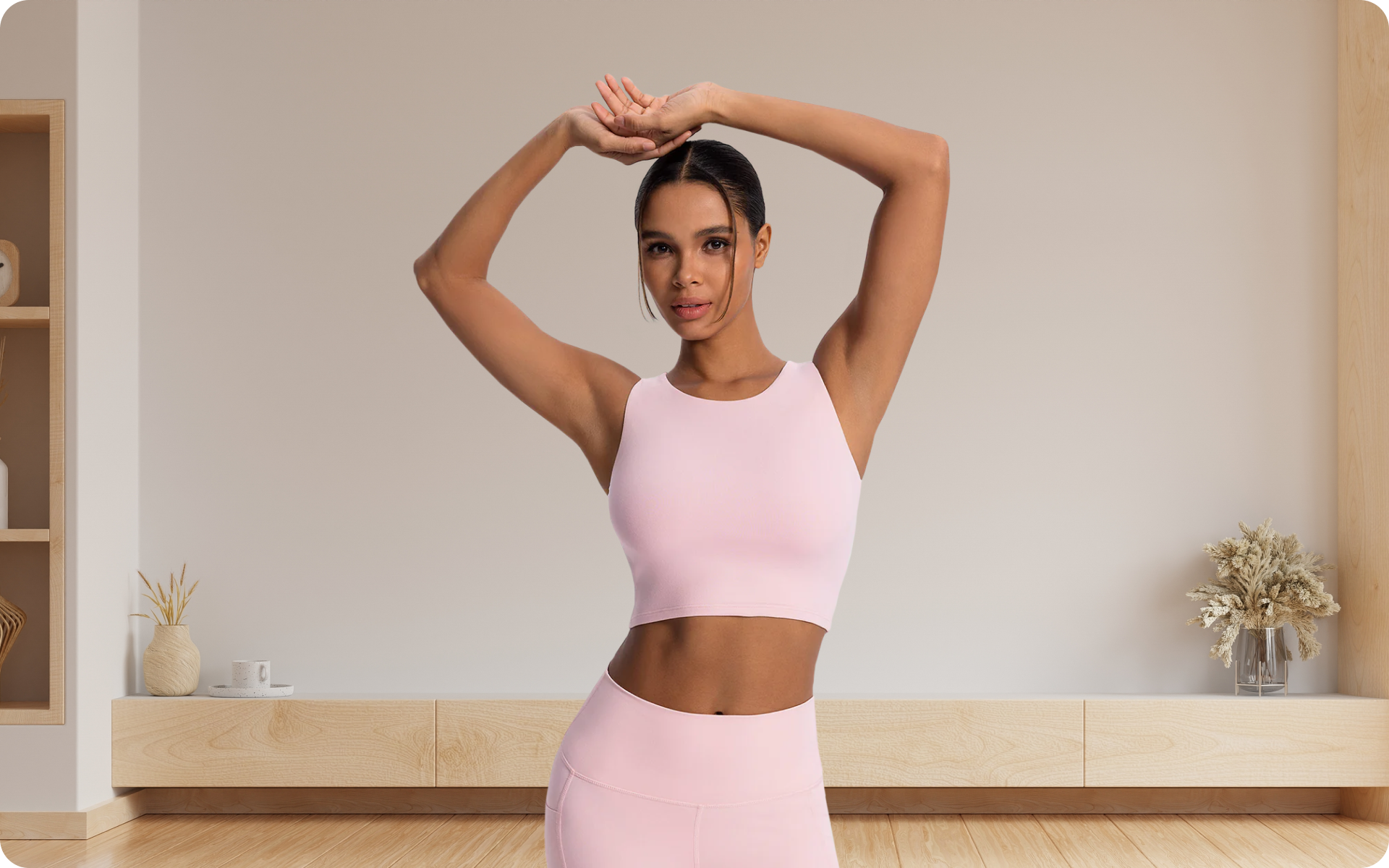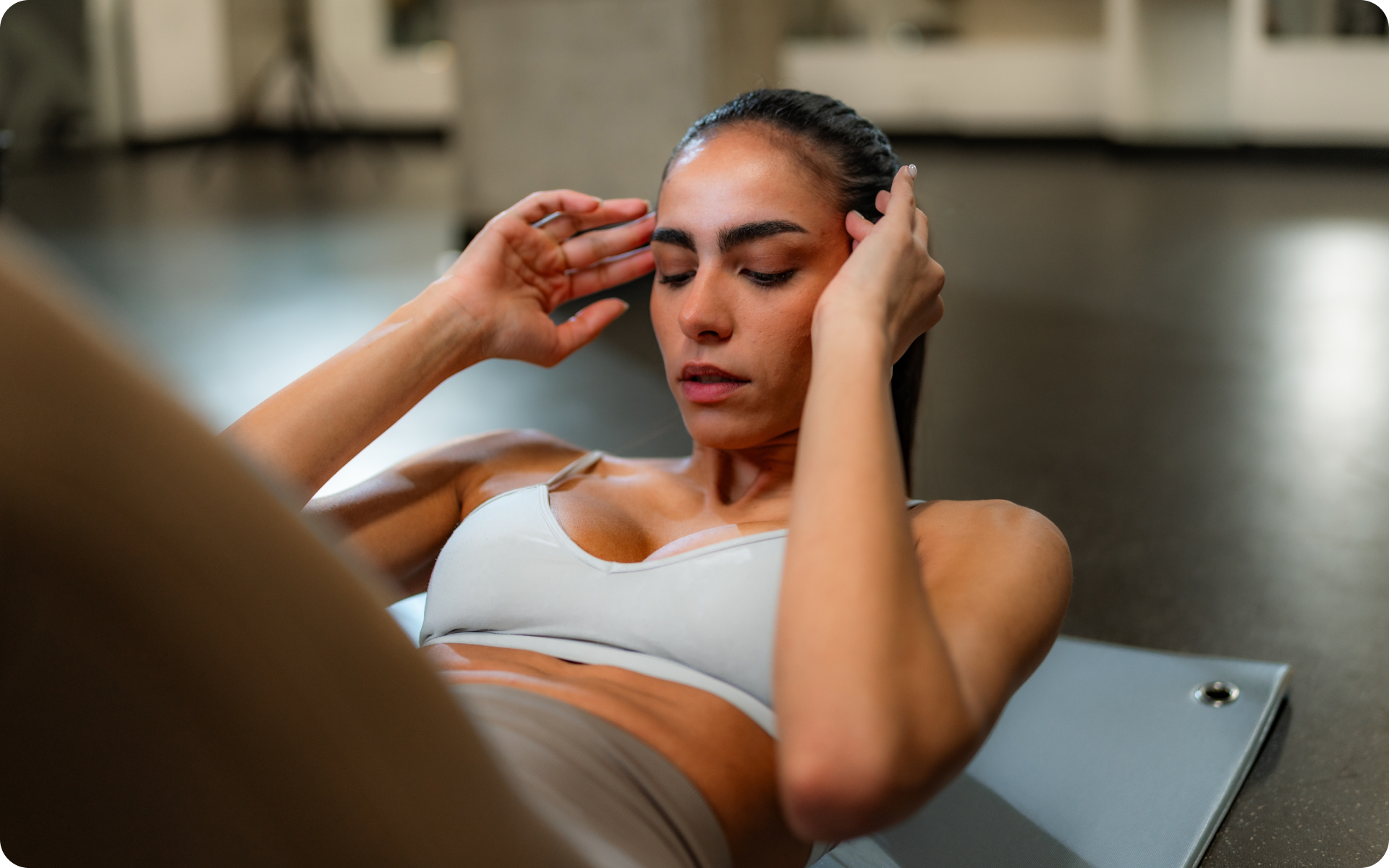Many gym-goers chase the elusive six-pack, often adding on a few sets of crunches at the end of a workout. While this approach can be effective, dedicating an entire session to your core – an “ab day” – can offer unique benefits for building strength, stability, and a well-defined midsection.
This guide explores the value of a dedicated ab day workout. We will cover how to structure it within your training week, what equipment to use, and provide a complete, evidence-based ab workout you can perform at the gym.
Is It OK to Have an Ab Day?
While your core is engaged during many compound exercises such as squats and deadlifts, an ab day allows for focused, high-volume training that can accelerate muscle growth and strength development in the abdominal region.
A dedicated core day workout at the gym ensures you can train your abs with maximum intensity, rather than when you’re already fatigued from a full-body or upper-body session.
This focused effort can stimulate hypertrophy more effectively and improve your ability to stabilize your spine during other heavy lifts. It allows for a greater variety of exercises that target different parts of your core musculature (1).
On What Gym Day Should I Do Abs?
The best day to schedule your ab workout will depend on your overall training split and recovery capacity. A standalone ab day is most practical for individuals who train four or more times per week, as it allows for sufficient recovery between sessions.
If you have the time and energy, a separate, shorter session dedicated to abs can be highly effective.
For example, you could perform a 20-30 minute ab workout on a rest day or several hours apart from your main workout. This ensures you approach your core training with full energy, leading to a higher quality session (2).
BetterMe: Health Coaching app helps you achieve your body goals with ease and efficiency by helping to choose proper meal plans and effective workouts. Start using our app and you will see good results in a short time.
What Equipment to Use in a Gym for Abs
You don’t need specialized machines to get a great ab workout. Many effective core exercises can be performed using basic gym equipment that targets your abs from different angles and with varying resistance.
- Dumbbells and Kettlebells: These are excellent for adding resistance to movements such as Russian twists and weighted crunches. Holding a weight forces your core to work harder to maintain stability.
- Stability Balls: Using a stability ball for exercises such as crunches or planks introduces an unstable surface. This forces your deeper core muscles to engage more intensely to keep you balanced.
- Resistance Bands: Bands offer progressive resistance, which means the tension increases as you move through the exercise. This is ideal for exercises such as banded pull-down crunches or anti-rotation presses.
- Pull-up Bar: A pull-up bar isn’t just for your back and arms. It’s one of the best tools for advanced ab exercises like hanging leg raises and knee tucks, which heavily target the lower abdominals.
- Medicine Balls: These can be used for dynamic and rotational movements such as medicine ball slams and throws, which build explosive power in your core.
Are you curious about building a stronger core? Find out how often you should work your abs out.
Read more: Gym Workout to Lose Belly Fat and Tone Muscle
Do Machines Really Work for Abs?
Yes, ab machines can be incredibly effective for building abdominal strength and muscle. Machines provide guided movement, which helps isolate the target muscles and allows you to safely apply heavy resistance. This is particularly beneficial for beginners who are still learning proper form or advanced lifters who are looking to maximize mechanical tension.
Research supports the use of machines for core training (3). They provide a stable environment that allows you to focus purely on contracting your abdominal muscles without worrying about balance. This can lead to significant hypertrophy, which helps you achieve a more defined midsection.
Machines are sometimes criticized for not being functional (not involving movements that replicate everyday movements).
However, when they’re used correctly, they can improve your body’s ability to handle external forces and movements. For example, the seated row machine is great for strengthening your back and improving posture, which can prevent injuries while performing daily tasks or sports activities (4).
To get the most out of using machines, make sure to have proper form and adjust the weight according to your strength level. And as with any other training equipment, remember to listen to your body and avoid overtraining.
What Machine at the Gym Is Best for Abs?
While many machines can be effective, some are better designed for targeting the core than others. Here are a few common and effective core day workout gym machines you can use:
- Cable Machine: The cable machine is incredibly versatile. You can perform cable crunches, wood chops, and anti-rotation presses, all of which allow you to easily adjust the resistance and target your abs from multiple angles.
- Captain’s Chair / Vertical Knee Raise Station: This machine is excellent for targeting the lower abs and hip flexors. By supporting your body weight, it allows you to focus on lifting your legs to engage your core without straining your back.
- Abdominal Crunch Machine: This machine isolates the rectus abdominis by providing a fixed path of motion. It allows you to add significant weight, which makes it a great tool for progressive overload and building a strong “six-pack”.
- Torso Rotation Machine: This machine specifically targets the obliques. It provides controlled resistance as you twist your torso, which is essential for building rotational strength and a well-rounded core.
Are you interested in more advanced movements? Check out these ab exercises on pull-up bar.
What Is the Best Ab Workout in the Gym?
The best ab workout is one that targets all major muscles of the core, including:
- Rectus abdominis
- Obliques
- Transverse abdominis
This routine combines machine-based and free-weight exercises to provide a comprehensive training stimulus.
The Program:
- Sets: 3-4 per exercise
- Reps: 8-15 per set (stop 1-2 reps shy of failure)
- Rest: 60-90 seconds between sets
Perform this ab day workout once or twice per week to see optimal results.
Whether you’re a workout beast or just a beginner making your first foray into the world of fitness and dieting – BetterMe has a lot to offer to both newbies and experts! Install the app and experience the versatility first-hand!
Hanging Knee Raises
This exercise is excellent for targeting the lower portion of the rectus abdominis. Focus on using your abs to lift your knees, not swinging your body for momentum.
- Grip a pull-up bar with an overhand grip, your hands shoulder-width apart. Let your body hang with your legs extended.
- Brace your core and slowly raise your knees toward your chest, curling your pelvis upward at the top.
- Hold the peak contraction for a second before slowly lowering your legs back to the starting position.
Cable Crunches
Cable crunches allow you to load the abdominal muscles with heavy weight through a full range of motion, which makes them a superior choice for hypertrophy.
- Attach a rope handle to a high pulley on a cable machine.
- Kneel on the floor facing the machine, holding the rope handles on either side of your head.
- Keeping your hips stationary, contract your abs to pull your torso down toward the floor, crunching your chest toward your pelvis.
- Squeeze your abs at the bottom, then slowly return to the starting position.
Russian Twists
This exercise targets the obliques, which are crucial for rotational strength and creating a tapered “V” shape in your midsection.
- Sit on the floor with your knees bent and your feet slightly elevated. Lean back to a 45-degree angle, keeping your back straight.
- Hold a dumbbell or weight plate with both hands in front of your chest.
- Rotate your torso from side to side, touching the weight to the floor on each side of your body. Keep your core engaged throughout.
Plank
The plank is an isometric exercise that builds endurance in the entire core, including the deep transverse abdominis, which acts as a natural corset for your spine.
- Position yourself on the floor in a push-up position, but with your weight resting on your forearms instead of your hands.
- Keep your body in a straight line from your head to your heels. Don’t let your hips sag or rise too high.
- Engage your core and glutes, and hold this position for the prescribed time.
When you can easily hold a plank for 30+ seconds, use more challenging variations. These include single-arm planks and plank walk-outs.
If you really want to challenge your core, try ab rollouts, which are like planks on steroids! Multiple studies have indicated that these are some of the most effective ab exercises for total core training (5).
Do you want more exercise ideas? Discover our list of the top 5 abs exercises.
Read more: Beginner Gym Ab Workout Routine: 4 Exercises to Do
What Should I Pair with Abs at the Gym?
Pairing your ab day workout with other muscle groups or activities can make your training more efficient. The best pairing will depend on your overall fitness goals and weekly schedule.
- Calves: Calves are a small muscle group that recovers quickly and can be trained with high frequency. Pairing them with abs creates a focused session on smaller, often-neglected muscles without causing too much overall fatigue.
- Cardio: Performing a low-to-moderate intensity cardio session after your ab workout is an excellent way to burn extra calories and improve cardiovascular health. For example, 20-30 minutes on the elliptical or stationary bike would be appropriate.
A very common way to pair abs with other muscles is training them on the same day as arms. Having a dedicated “arms and abs day” allows you to really focus on these muscles instead of treating them as an afterthought. Plus, you make the best use of your time!
Yes, training abs at the gym is highly beneficial. A gym provides access to a wide variety of equipment, such as cables, weights, and machines, that allow you to apply progressive overload and target your core muscles more effectively than with bodyweight exercises alone. Absolutely. Gym machines such as the cable station, Captain’s Chair, and abdominal crunch machine are excellent for isolating the ab muscles and applying heavy resistance, which is a key driver of muscle growth (hypertrophy) (6). The Ab Swing, or similar swinging devices, can help you perform the crunching motion. However, their effectiveness depends entirely on your form. Many people rely on momentum rather than muscular contraction, which reduces the benefits of the exercise. Controlled movements on a stable surface or using traditional gym equipment are often more effective. Planks are one of the best exercises for building core stability and endurance (7). They work the entire core musculature, including the deep transverse abdominis, which helps stabilize the spine and improve posture.Frequently Asked Questions
Do you train abs at the gym?
Can you grow your abs with gym machines?
Does the Ab Swing really work?
Are planks good for your abs?
The Bottom Line
Dedicating a specific day to your core is a powerful strategy for building a stronger, more defined midsection. By using a mix of equipment and focusing on proper form, you can create an ab day workout that delivers significant results. Consistency is key, so integrate this routine into your weekly split and watch your core strength transform.
DISCLAIMER:
This article is intended for general informational purposes only and does not serve to address individual circumstances. It is not a substitute for professional advice or help and should not be relied on for making any kind of decision-making. Any action taken as a direct or indirect result of the information in this article is entirely at your own risk and is your sole responsibility.
BetterMe, its content staff, and its medical advisors accept no responsibility for inaccuracies, errors, misstatements, inconsistencies, or omissions and specifically disclaim any liability, loss or risk, personal, professional or otherwise, which may be incurred as a consequence, directly or indirectly, of the use and/or application of any content.
You should always seek the advice of your physician or other qualified health provider with any questions you may have regarding a medical condition or your specific situation. Never disregard professional medical advice or delay seeking it because of BetterMe content. If you suspect or think you may have a medical emergency, call your doctor.
SOURCES:
- Core exercises: Why you should strengthen your core muscles (2025, mdpi.com)
- Effect of exercise training intensity on abdominal visceral fat and body composition (2009, pmc.ncbi.nlm.nih.gov)
- Core Muscle Activity during Physical Fitness Exercises: A Systematic Review (2020, pmc.ncbi.nlm.nih.gov)
- Pulling Exercises for Strength Training and Rehabilitation: Movements and Loading Conditions (2017, mdpi.com)
- Electromyographic Analysis of Traditional and Nontraditional Abdominal Exercises: Implications for Rehabilitation and Training (2006, academic.oup.com)
- Resistance Training Load Effects on Muscle Hypertrophy and Strength Gain: Systematic Review and Network Meta-analysis (2021, journals.lww.com)
- Effectiveness of Modified Plank vs Conventional Plank on Core Muscle Endurance and Stability in Recreational Athletes: A Quasi-Experimental study (2021, researchgate.net)
